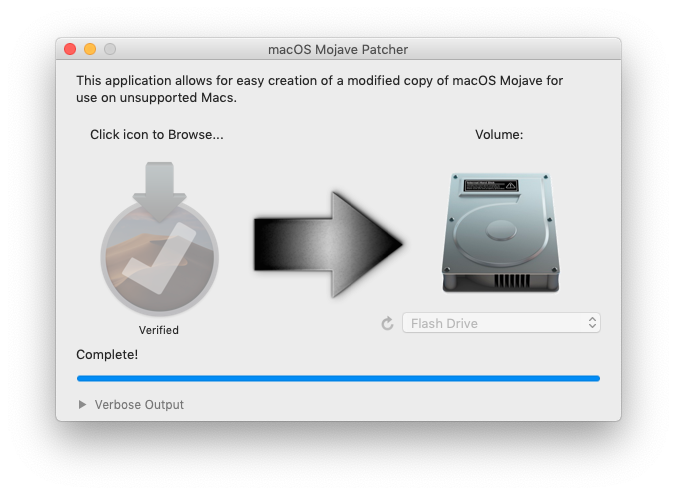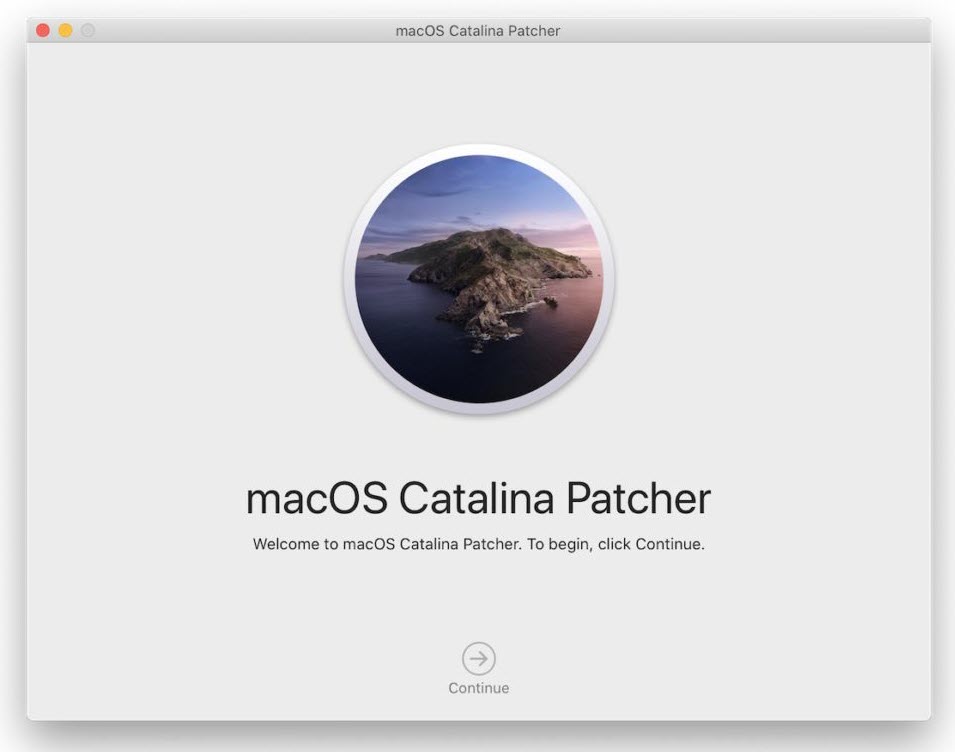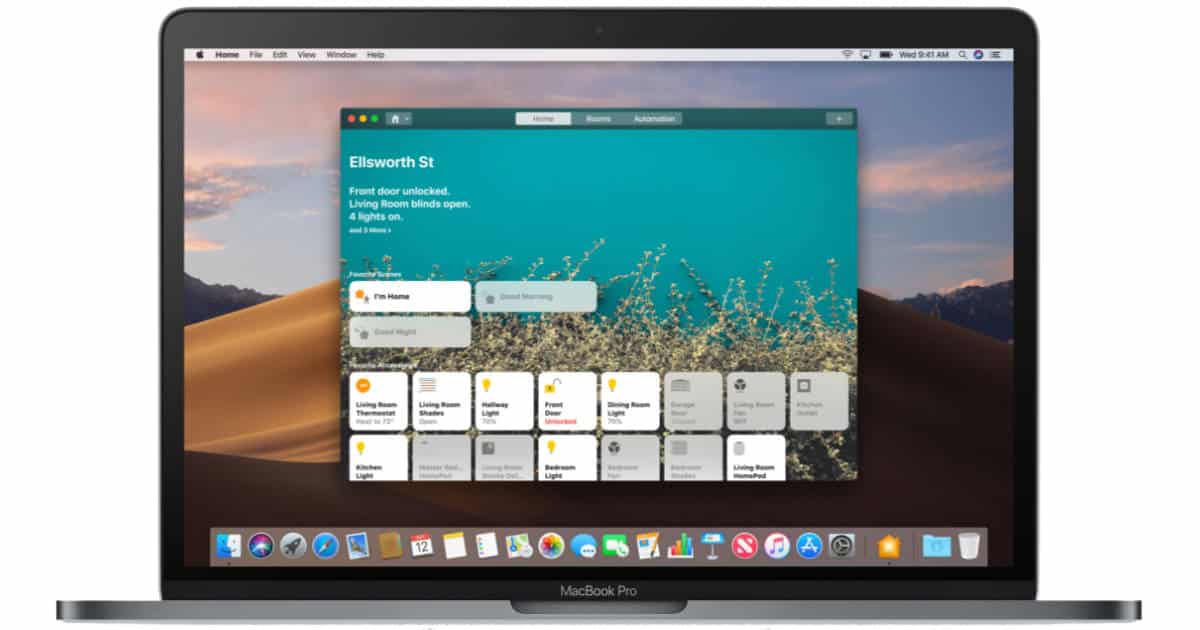macOS Catalina is the most advanced version of the macOS which came in our hands on October 7, 2019. The introduction of Catalina happened in WWDC 2019. The public beta of macOS Catalina was out later on in July 2019. Apple introduced Catalina with fantastic features and amazing wallpapers by describing macOS Catalina, is a fantastic listener and she can understand you better than anyone. Catalina also has a Time-Shifting desktop which turns light into dark or dark into light according to your time zone. Here’s how to Install macOS Catalina on Unsupported Mac.
The profile picture of macOS Catalina is a lovely picture of Santa Catalina Island which changes depending on the time. The night time wallpaper is a picture of a navy blue ocean and dark blue sand mountain and the day time wallpaper is a beautiful picture of light yellow sand mountain which we can’t explain in words. The name of Catalina is taken from the Santa Catalina Island of Los Angeles. But according to some sources, it is taken from a girl’s name in Spanish and which means “Pure”.
macOS Catalina
These following steps are only necessary if you do not have a copy of the Mojave installer application. Click “Tools” and then click “Download macOS Mojave” in the dropdown menu when it appears. Click continue, and then select where you will save the installer. Music file: any question you have:D. I hope this has helped you installing Mojave on a Unsupported Mac! Info (from the website): Updates. System updates, such as 10.14.1, should install normally if 'Software Update Patch' was selected in the macOS Post Install tool, or installed using the Patch Updater program.
Catalina’s complete version was down on October 7th, 2019. After Catalina was completely out, there were many new things and as well as many problems. I personally use macOS Catalina and I like it very much and have no problem with it except a little difficult to find things. However, there are lots of features and updates I haven’t still touched off.
With the help of Catalyst, you can use macOS and iPadOS simultaneously. Apple has made so many new updates and features which let us edit my photos and videos like a pro editor. Catalina is loved by so many people and people like to use macOS Catalina not only by Mac users but also by Windows and other operating system users. In this article, I’ll show how to Install macOS Catalina on unsupported Mac.
The latest updates happened in macOS Catalina march 24 2020. Due to this update changes came into Screen Time Communication Limits, a feature first brought to the iPhone in the iOS 13.3 update, it adds iCloud Folder Sharing, and it brings a new Head Pointer Accessibility option that allows the cursor to be controlled with head movements using Mac’s camera. We’ll see how to Install macOS Catalina on Unsupported Mac.
Check If Your Mac is in The Unsupported List
macOS Catalina is excellent but if users can’t use it, then it makes no sense to know it. From while ago, Apple has been cutting and making the compatible Macs list larger for their new versions and this list is also applied to Catalina. As Apple is rolling more versions they are cutting more old Macs from the list. The list of unsupported Mac is getting larger and is already too large. Maybe that’s because Apple wants more users to buy their new products instead of using their old ones.
Since the list of unsupported Macs has increased now some users who run Mojave also can’t install macOS Catalina. According to Apple, they said, we are decreasing the number of Mac supports because old Macs don’t have enough capacity and Metal graphics processors. According to Apple, they said, we are sorry for all the old mac users who can’t experience MacOS Catalina in their Mac. Not everyone can afford to get a new Mac every year and Macs aren’t cheap too. Don’t worry, we are going to show you how to install macOS Catalina on unsupported Macs.
Before heading towards installing macOS Catalina on your Mac, check out the unsupported list of Macs and if your Mac is from the unsupported list. Here are the list of unsupported Mac.
- Early-2008 or newer Mac Pro, iMac, or MacBook Pro:
- MacPro3,1
- MacPro4,1
- MacPro5,1
- iMac8,1
- iMac9,1
- iMac10,x
- iMac11,x (systems with AMD Radeon HD 5xxx and 6xxx series GPUs will be almost unusable when running Catalina.)
- iMac12,x (systems with AMD Radeon HD 5xxx and 6xxx series GPUs will be almost unusable when running Catalina.)
- MacBookPro4,1
- MacBookPro5,x
- MacBookPro6,x
- MacBookPro7,x
- MacBookPro8,x
- Late-2008 or newer MacBook Air or Aluminum Unibody MacBook:
- MacBookAir2,1
- MacBookAir3,x
- MacBookAir4,x
- MacBook5,1
- Early-2009 or newer Mac Mini or white MacBook:
- Macmini3,1
- Macmini4,1
- Macmini5,x (systems with AMD Radeon HD 6xxx series GPUs will be almost unusable when running Catalina.)
- MacBook5,2
- MacBook6,1
- MacBook7,1
- Early-2008 or newer Xserve:
- Xserve2,1
- Xserve3,1
If you’ve checked and found out your Mac is in the unsupported list, step to the next step which is how to install macOS Catalina on unsupported Mac.
What You’ll Need
Before you step ahead, here are what you’ll need for this procedure.
- A 16GB USB Drive
- Backup Mac
Once that’s with you, now dive into how to Install macOS Catalina on Unsupported Mac.
Backup Your Mac
Before installing any operating system, its important to take backup of your computer completely. We recommend backing up your device. Because if anything goes wrong and you hadn’t backed up your device everything will be deleted but if you had backed up your device you can simply restore that. Here are the steps.
First if you want to backup, Time Machine Backup will help you do it without deleting any of your folders.
Connect an external hard disk or a USB with some space.
On the upper left corner of your screen, click on the Apple icon. Go to the dropdown menu and select System Preference.
By clicking on Time Machine you can make a machine which will back up your device.
Choose your backup and click on Backup.
With that done, we’ll start the process and how to Install macOS Catalina on Unsupported Mac.
How to Install macOS Catalina on Unsupported Mac
After checking your Mac, if your Mac is in the unsupported list, you can install macOS Catalina slightly without this tool and steps. If your Mac is unsupported follow the steps below.
Once the tool is there, open it. Click on Continue.
That done, if you’ve the macOS Catalina copy, select Browse for a copy. If you don’t select Download a copy.
macOS Installer App
On this window, click on Start Download.
After it’s completed, insert the USB and click on “Create a Bootable Installer”.
Installation Method
Let the process finish and once it’s done, take out the USB. After a few moments, insert the USB again then reboot the Mac.
When powering on hold the Option key for a while until the startup manager appears. After the Startup Manager opens click on the USB Drive with the help of arrow keys.
In this point, select Disk Utility and click on Continue.
If you have done the previous steps correctly, you are now in the Disk Utility window. To format your internal drive with APFS format, select the drive and click on Erase. When you’re done, close the window.
Erase Disk
Wait for the window and select Reinstall macOS to start the installation.
Click Continue with the simple installation wizard and on the install window, select the appropriate disk and click on Install. It might take some while. And you will see many commands going up and down.
Click on the Force Cache Rebuild option and click Restart.
Welcome
By this step, you will see macOS Catalina Setup running on your Mac.
After the installation process is done you need to shut down your Mac and insert the USB drive for booting your computer. we are doing this step to verify patches.
Now you are completely done with the settings and everything, we have installed the latest version of macOS booted on an unsupported device.
The installation process might be difficult but it is not impossible and even if others say it is impossible we will make possible for you.
Jul 16, 2018 Download macOS Mojave Patcher tool. DMG file (official link) How to install macOS 10.14 on older Mac models. Step 1 Download the DMG file using the link above on your computer. Step 2 Launch the macOS Mojave Patcher tool by double-clicking the DMG file. Step 3 Specify the path for the bootable image and choose the appropriate USB.
The Mojave 10.14.1 update does NOT install properly on unsupported machines, and could result in an unbootable OS. If you want to install the 10.14.1 update (and are not currently running 10.14.1), perform the following steps:. Download the latest version of Mojave Patcher. Download the installer using the Tools menu of Mojave Patcher. Choose 'Create a bootable installer' from the options. Plug the bootable installer into the Mac you wish to update. Restart the Mac while holding the Option/Alt key. This will cause the Mac open in. Step 1 How to install macOS Mojave on Unsupported Macs. Grab a copy of the Mojave Patch Tool at the link below: Make sure that your Mac is. Install Mojave and run the post install patch from the installer screen on your second boot If there is another dosdude patch update and you run it from the bootable OS install and you loose any functions then reboot back into the original installer.
Apple’s new macOS Mojave doesn’t support the old Macs prior to 2012. It was a shocking news for me too.
You may also like to read the following posts:
I have an old, not for me actually, MacBook Pro which I purchased at the end of 2010. I was expecting Apple won’t drop the support of Mojave for MacBook Pro 2010 model, at least not for this time. But I was wrong. The latest Majove doesn’t support it too.
There is no need to worry. Even the oldest Windows 95 can be installed on Mac computer. There is a solution to every problem.
I don’t want to upgrade my MacBook Pro right now, especially when a new model is rumored to be released in next month.
Another choice for me was to buy a graphics card which supports Metal. In fact, it was the most feasible solution for to get installed Majove on my unsupported Mac right now.
Metal is natively supported by all Macs introduced since 2012. It means the following Nvidia, AMD and Intel family cards are compatible.
-Intel HD Graphics 400, Iris 5000 & 6000 family
-Nvidia GT 600M, 700M family
-AMD R9 M family
To check which GPU (graphics processing unit) is installed on your Mac computer, click on the Apple icon in the top left corner and then click on “About This Mac”.
There are a number of third-party vendors which sell graphics cards with integrated Metal support specifically designed for Mac computers. While searching for a compatible graphics card, I found that I could install Mojave on my MacBook Pro Mid 2010 model by using a software known as macOS Mojave Patcher Tool. Kudos to DosDude1 who developed tested, and released it as a free app.
By using this software, we could install the latest macOS version on early 2008 Macs.
Here is the step by step method to run Mojave on unsupported Macs.
Macos Sierra
The whole process can be divided into four parts.
- Part 1. Getting all the required things
- Part 2. Downloading the macOS Mojave Installer App
- Part 3. Making a bootable Mojave USB drive
- Part 4. Installing and Patching Mojave OS on the unsupported computer
We will discuss each part in details in the following paragraphs.
Part 1: Requirements to Run Mojave on Old Macs
Four things are required to get macOS Mojave installed on your forgotten-by-Apple Mac.
- Your Mac computer
It could be an early-2008 or newer Mac Pro, iMac, or MacBook Pro. The following models include under this category.
– MacPro3,1
– MacPro4,1
– iMac8,1
– iMac9,1
– iMac10,x
– iMac11,x
– iMac12,x
– MacBookPro4,1
– MacBookPro5,x
– MacBookPro6,x
– MacBookPro7,1
– MacBookPro8,x
It could be late-2008 or newer MacBook Air or Aluminum Unibody MacBook. The following models include under this category:
– MacBookAir2,1
– MacBookAir3,x
– MacBookAir4,x
– MacBook5,1
It could be early-2009 or newer Mac Mini or white MacBook including the following models:
– Macmini3,1
– Macmini4,1
– Macmini5,x
– MacBook5,2
– MacBook6,1
– MacBook7,1
And it could be Xserve2, 1 and Xserver3, 1.
- A USB drive in 16GB size or above
- macOS Mojave patcher tool. Download it here.
- A copy of the Mojave software.

Part 2: Download macOS Mojave Installer Software
MacOS Mojave software can be downloaded as an Installer App from Mac App Store using the computer which supports Mojave.
If you don’t have Mojave supported Mac, you can download the Mojave Installer App using patcher tool. Open the macOS Mojave patcher tool. If it doesn’t open and says it is from an unidentified developer, right click on the tool’s icon and click on “Open” from sub-menu and then enter your Mac’s Admin name and password. After the verification, you can open it with the left double-click.


If you don’t remember your macOS password, here are the solutions to reset it.
Go to Tools in the Menu bar and then hit “Download macOS Mojave”.
I recommend using the built-in downloader tool because it will download the latest and the compatible Installer app.
Mojave Installer app is about 5-6GB in size and it may take some time depending on the speed of your internet. Download safari for mac catalina.
If the internet connection interrupts while downloading the file, don’t worry. The downloading process will resume where it left. Simply download the Mojave software again but point it to the same location where you were already downloading and saving the installer app.
Part 3: Create a Bootable Mojave USB Drive
In order to create a bootable Mojave USB Installer drive, follow these steps.
Step 1: Insert 16GB or above USB drive into your USB port of your Mac.
Step 2: Open Disk Utility and erase the USB drive in OS X Extended (Journaled) format. Give a proper name before erasing. I gave the name “macOS Mojave” to my USB drive.
If you are new to Mac, get the basic information about how to make a Partition, erase the current partition and how to make a bootable USB drive.
Step 3: After the drive is erased, open “macOS Mojave Patcher” tool.
Step 4: Point the Patcher tool to the downloaded Mojave Installer app which is downloaded in Part 2.
Macos Mojave Download App Store
Step 5: Now select the target USB drive you just formatted.
Step 6: Hit the “Start Operation” button on the patcher tool and let it make the USB bootable with Mojave.
Step 7: It will show “Complete” when the process is done.

Part 4: Installing and Patching macOS Mojave
In this fourth and final part, we will install and patch the macOS Mojave on our old Mac computer. Follow the steps below to complete the remaining procedure.
Step 1. Restart your computer and hold down the “Option” key as soon as the Mac starts up.
Install Macos Mojave On Unsupported Mac
Step 2: Select the USB drive, which was named as “macOS Mojave” as the startup disk.
Step 3: If you want to upgrade your current macOS to macOS Mojave, simply use the continue button to proceed and follow step 5. But if you want to install it on another partition or want to erase the current partition first, then follow the Step 4.
Step 4: Open Disk Utility from the bottom left panel.
Select the volume you want to erase. Use Mac OS Extended (Journaled) format. Or if you have got late-2009 and later machines with SSD drives, you can also use APFS format.
If you don’t want to install Mojave on current volume, you can also create a new partition and install it there. Mojave takes approximately 18GB space on hard drive. So at least make a 25GB partition to test the new macOS.
If you want to use it for all routine work, set the partition size according to your needs.
Step 5: Select the volume and press “Continue” to begin the installation process.
Step 6: The installation process takes about 20 minutes to complete. When it is done, reboot your Mac back into installer drive while holding down the “Option” key again.
Step 7: This time select “macOS Post Install” app from the bottom left panel.
Step 8: Select the model of your computer and the volume on which you installed Mojave and then click the “Patch” button. The tool will automatically select the required patches according to the model of your computer.
Step 9: Press the “Reboot” button when the patch is complete.
Step 10: The computer will reboot with macOS Mojave installed on it.
Step 11. If it doesn’t work properly on the restart, boot your Mac back into the installer USB drive, select macOS Post Install again, and this time also select “Force Cache Rebuild” option. Once the patch is complete and the cache is rebuilt, reboot.

Step 12: Upon restart, complete the setup process and start using your Mac with a Mojave operating system.
Happy Mojaving!!
For additional information and to know more about the known issues, please visit DosDune1’s website. He is an awesome guy.
Install Macos Mojave 10.14
Note: You will see a new “Patch Updater” app in the Applications under “Other” folder. It will alert you when new patches are available for your computer.
Install Macos Mojave On Unsupported Mac
Your Mac will get the future Mojave updates as other supported computer do. If you don’t see the updates, or your computer doesn’t work properly after applying the update, use the step 11 of Part 4 to enable all patches.